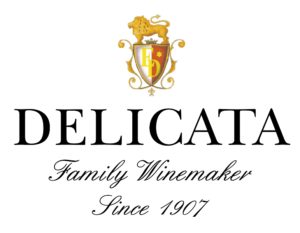Wine is a Living Thing
Indeed, wine is a living thing. Since its discovery so many millennia ago, wine has fascinated many peoples and has been the subject of many changes. In fact, wine continues to change all the time.
In its simplest formula, wine is the beverage made from the juice of healthy grapes grown in the vineyard, full of natural grape sugars that can, by the action of yeast, be fermented into alcohol at the winery.
Perhaps wine’s real distinguishing mark, the thing that sets it apart from other agricultural produce, is the ability of some wines to last for years and even decades – not just lasting but sometimes improving.
Generally, during the process of maturation and ageing, the most obvious change occurs in the colour of the wine. In white wine, the colour becomes golden and can turn to brown if the wine is aged too long. In red wine, the purple and violet tints are progressively replaced by orange and brick red colours. The grape-derived aromas fade and different smells and flavours develop.
But not only do the organoleptic properties of wine change whilst it ages in casks or in bottle. There are many other factors such as differences in viticultural and winemaking practices that will cause the very nature of wine to change over time.
Odd as it may sound, many winemakers have come to realise only relatively recently quite how important the vines themselves are to wine quality.
For example, the simple fact that grape varieties nowadays are easily identified and grown in separate vineyard blocks will result in different tasting wines than those that were produced 50 years ago from unremarkable field blends of unknown red and white wine grapes growing entwined and harvested at the same moment (despite the fact that different varieties ripen at different times).
The ancient method of pressing the grapes, in which they get trodden by harvesters or pressed by means of traditional basket presses powered by hand or an animal, is less and less seen in modern winemaking. Today pneumatic presses are the most common and qualitative machinery. Wine is now produced using techniques that yield a more uniform type of wine and reduce the risk of spoilage, especially that which transforms the wine into vinegar.
Like never before is wine subject to fleeting fads and more enduring trends, which are often a result of cultural changes, marketing campaigns and the media influencing customer behaviour in the market place, and vice versa. Often changes in the type of wine that’s being produced and its price are a consequence of shifting consumer preferences.
A case in point is the rise in demand for drier rosé by northern American drinkers. The USA are turning to the rest of the world to satisfy this new thirst since the majority of rosé produced domestically is presently still sweet blush. This is reflected in the increased production and astounding leap in exports from the Provence in France, a major source of dry rosé wines.
But above all, wine is an alcoholic beverage that, perhaps more than any other produce, speaks of the land it originates from and its traditions, institutionalised in an appellation system or not. Wine is one of the very few items we can pick off a shop shelf and know exactly which place was responsible for it.
Wine is the result of the ecosystem that is the vineyard. This micro-environment where a particular grape variety has been planted and grows is conditioned by the soil, the climate and the yearly weather patterns as well as diseases and pests, all interacting with each other and with the skilled grape grower who will eventually turn over his crop to the winemaker whose name usually gets printed on the bottle’s label.
A good wine is like a good book, a personally authored recount that lives on in our memory.
This article by Georges Meekers appeared first in the Times of Malta, 23th June 2016

